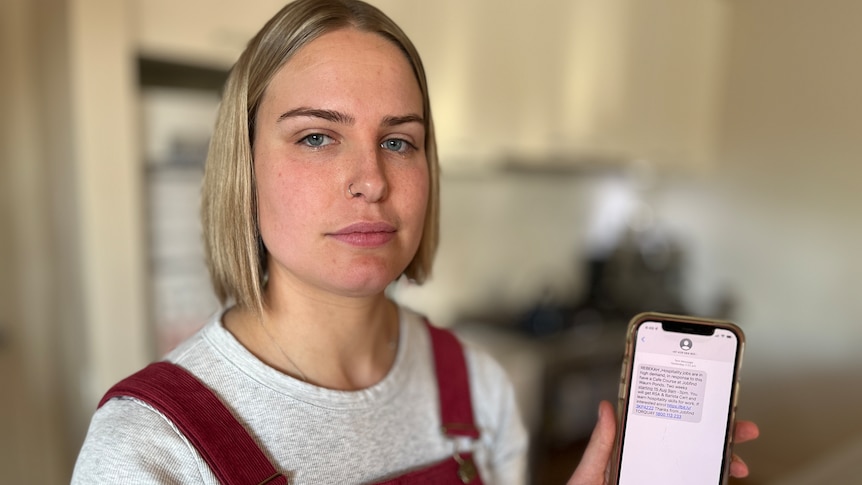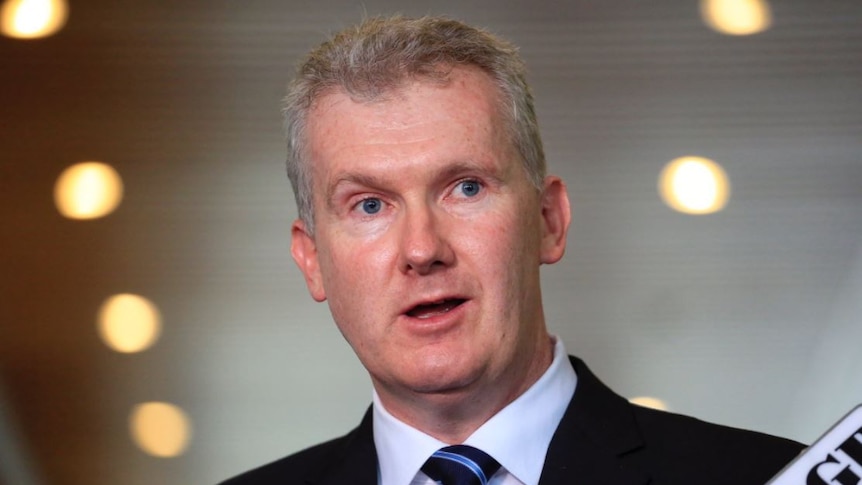Rebekah Maslen has been working hard to prepare herself for a new career.
Key points:
- The transition to Workforce Australia has been described as “appalling”
- Some students say they have been told by job agencies to complete extra mutual obligations, despite rules stating they do not need to
- Job providers and the government concede there have been challenges but they remain committed to the system
The Ocean Grove-based student is completing a diploma of early childhood education and care, which includes 24 hours per week on placement, plus about 15 hours of study and two days of classes.
She is also one of many Australians struggling to come to grips with the biggest overhaul of unemployment services in decades.
“I would say the transition has been appalling,” she said.
“The way I’ve been treated … and the lack of information around how to use the system in detail [has] not been a very good experience.”
At the start of July, more than 800,000 jobseekers transferred to Workforce Australia, which has been pitched as a more flexible alternative to the much-maligned jobactive system.
The changes were passed under the Morrison government with Labor’s support prior to the May election. Contracts with job service providers — private companies paid by the government to get people into work — worth $7 billion were also signed.
To continue receiving the JobSeeker payment, most people need to perform mutual obligations — tasks set by the government aimed at enhancing employability.
Under jobactive, mutual obligations most commonly revolved around job applications, and jobseekers needed to submit 20 a month. That requirement could be waived if a jobseeker was completing a Certificate III course or above, which includes diplomas.
Now, those required to complete mutual obligations have transitioned to a system where they earn points for completing a wider range of activities, such as short courses, getting a drivers license or attending a job fair.
If they do not receive a certain number of points each month, their payments can be suspended.
Ms Maslen said she was told by her job provider that to comply with the new system she must apply for at least four other jobs every month on top of her diploma and placement.
She also said she had consistent difficulty finding a way to get points credit for her placement hours through the online portal.
“The things you’re asked to do for getting points, things like getting a forklift license … I don’t find very helpful as someone who’s studying,” she said.
‘It’s really demoralizing’
The government made a series of tweaks to the design of Workforce Australia days before it launched.
Employment Minister Tony Burke said at the time that the changes would ensure someone participating in full-time study or training that improved their long-term job prospects “would not be putting their qualifications at risk”.
However Ms Maslen said that was what she felt Workforce Australia was doing to her.
“I feel penalized for choosing to study and to do a placement,” she said.
Ms Maslen said she had also been frustrated by experiences with her job provider.
“I often come back from my interviews feeling very frustrated and often in tears because I don’t understand how to use the system,” she said.
“I kind of feel like I’m being made to do all these things just so someone in an office can tick a box. I don’t really feel like that’s fair and it’s really quite demoralizing.”
Asked about mutual obligations requirements for students, the Department of Employment and Workplace Relations (DEWR) said people undertaking approved full-time courses shorter than 12 months, such as Ms Maslen, should not have job-search requirements.
“Providers have been instructed to reduce the minimum job search requirement to zero for these participants. The department’s Digital Services Contact Center can also remove the job search requirement for those participants,” a spokesperson said in a statement.
‘Designed to punish people’
The overall transition to Workforce Australia has been heavily criticized, with jobseekers and advocates voicing confusion and concern ahead of the launch.
Outside those affecting students, a raft of other issues has surfaced since the scheme launched. The ABC has heard reports of jobseekers:
- Being recommended jobs based in states they do not live in and requiring qualifications they do not have
- Traveling hundreds of kilometers for short face-to-face appointments with providers which they said could have been done remotely
- Entering information on the Workforce Australia app or website which was not later accessible to providers
- Having to complete skills seminars on things they already know and complete questionnaires assessing whether “zest” was a character strength of theirs
Jay Coonan, a spokesperson from the Antipoverty Centre, said jobseekers were not being treated as individuals and had been left to “figure out the system themselves”.
“It’s much the same [as jobactive]. It was never about making it more flexible for people, even though that’s what they marketed it as,” he said.
Mr Coonan said many of the issues to arise were foreseeable and things overall were “a mess”.
“There are people out there who are pretty much working full time … but are still forced to do mutual obligations simply because the system is designed to punish people who need help from the government.”
The DEWR spokesperson said the app and website were continuously reviewed to ensure they “meet the needs of users”, and jobseekers concerned by how their appointments were being managed could contact it via the National Customer Service line.
‘Everyone needs to be aligned’
Mr Burke last week flagged concern with the rollout and granted user experience had varied “wildly”.
A parliamentary committee has been set up to scrutinize the program, but will not report back until September 2023.
Sally Sinclair, CEO of the National Employment Services Association, the peak body for the contracted employment services sector, said she thought the rollout was going “relatively well” given the scale of the transition.
“Everybody is working very hard to make this the most positive experience possible for both the participants and employers … but it’s going to take a bit of time to build,” she said.
Ms Sinclair was pleased the parliamentary committee would look at the “bumps in the road”, but said she remained supportive of the system.
“The realities are that this is a large-scale government investment with a lot of contractual requirements … but we need to make sure that everybody is aligned.”
The government has indicated it may make further changes before the inquiry reports.
For Ms Maslen and other anxious jobseekers, that cannot come soon enough.
“It doesn’t make it easy for anyone studying to be able to meet their points,” she said.
Loading form…
.

